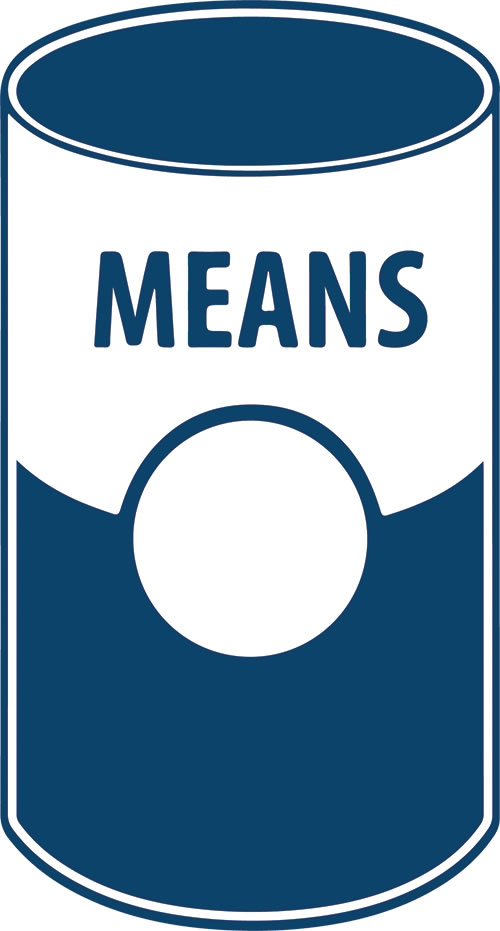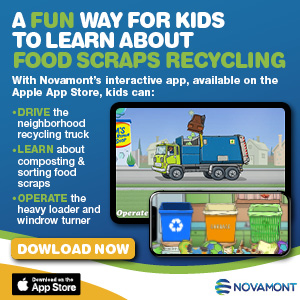Rhode Island Department of Health program addresses the related issues of food wastage and state residents going hungry by connecting food donors and receivers such as pantries.
Kristy M. Whitcomb
BioCycle March/April 2019
Over the past decade, awareness about the connections between food waste disposal, wasted edible food and food insecurity has grown significantly. Food waste, when disposed in a landfill, decomposes and produces methane that is 21 times stronger than carbon dioxide. The economic consequences also are severe: According to ReFED, the U.S. spends $218 billion annually growing, processing, transporting and disposing of roughly 63 million tons of food that ultimately goes uneaten (ReFED, 2016).
At the same time this food is being wasted and generating methane, households are food insecure. Food insecurity falls into two categories — low, and very low. Low food security is defined as reports of reduced quality, variety or desirability of diet with little or no indication of reduced food intake (USDA, 2018). Very low food security is defined as reports of multiple indications of disrupted eating patterns and reduced food intake (USDA, 2018). Nationally, 16.3 million households (13%) are food insecure and 6.5 million households (5.2%) are very low food insecure (Coleman-Jensen, 2017).
Rhode Island’s statistics mirror national estimates. In Rhode Island, 56,320 households (12.8%) are food insecure, and 26,840 (6.1%) households report very low food security (Coleman-Jensen, 2017). There is a direct relationship between food insecurity and poverty. An estimated 130,000 Rhode Islanders are at or below the federal poverty line, and approximately 43,000 Rhode Island children live in poverty (RI Food Bank, 2018).
The Rhode Island Food Bank reports that of the Rhode Islanders they serve:
• 33% are younger than 18
• 20% are older than 60
• 44% of households have one or more working adults
• 70% report having to choose between paying for groceries or paying for utilities
• 62% report choosing between groceries or rent
• 22% have a family member in poor health
Addressing Food Insecurity
In the summer of 2017, the Rhode Island Department of Health’s (RIDOH) Center for Food Protection worked with its college interns to address the related issues of food wastage and Rhode Islanders going hungry by creating the Rhode To End Hunger Initiative. RIDOH is in a unique position to respond to this public health issue because there are no local health departments. It represents the entire state. In addition, its Center for Food Protection requires food safety trainings and inspections of all kitchens. So regardless of whether a food establishment is donating or receiving food, the same food safety standards and regulations apply.
An important step in launching the Rhode to End Hunger Initiative was to identify a mechanism to connect food donors with food receivers like soup kitchens and food pantries. Keeping costs to a minimum and reducing barriers to participation were important factors considered. After conducting a scan of available services, the MEANS Database was selected as the conduit for bringing unused, safe, and healthy food to Rhode Islanders in need. The MEANS Database is a nationally recognized nonprofit that operates a free, online communication platform that connects food donors and receivers in real-time. MEANS currently operates in 48 states; however, Rhode Island is the first state to use it for a statewide effort to combat food waste and food insecurity.
Spreading The Word
In its first year, the initiative has successfully prevented over 10 tons of food from being wasted and made available to Rhode Islanders in need. The state also boasts the fastest average claim time once a food donation has been posted to the MEANS database — only 10 minutes. The Rhode Island Good Samaritan Law and the federal Bill Emerson Food Donation Act protect donors who donate food believed to be safe and edible. Additionally, an added benefit for participating donors is that the MEANS database has the capability to track the number of pounds of food donated and produce a statement for donors to use for federal taxes. Agencies that receive the food have a no-cost avenue to increase the resources available to the clients they serve. And Rhode Islanders experiencing food insecurity have access to more healthy and safe food. This initiative benefits all that are involved.
Outreach continues to be essential to increase awareness about the Rhode to End Hunger and the issues it addresses. People in the food production and food service industries have proven to be passionate about reducing food wastage and helping their neighbors. Ongoing outreach includes cold calls to community agencies, email blasts, media coverage, public events on environmental health, and a postcard mailer. Staff from RIDOH’s Center for Food Protection also serve as ambassadors in promoting participation and work closely with the public health interns who are focused on this initiative.
In 2019, Rhode to End Hunger will expand upon its initial success. The primary goal is to increase participation from both food donors and food receivers, in addition to identifying solutions for transportation of food for those participants needing that assistance. RIDOH will continue to work with internal and external partners to promote program awareness.
Kristy Whitcomb was an intern on the Rhode To End Hunger Initiative while completing her Masters in Public Health.













